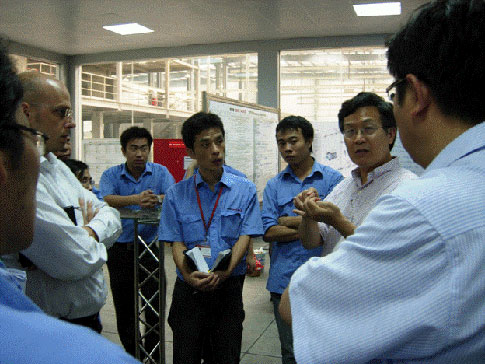Excellence Is Not an Event; It's a Habit
Ford Motor Co. has 65 major plants and facilities on six continents. How does a big company like Ford ensure all the stakeholders are invested in making sure excellence is a habit, not a series of one-off events? Achieving excellence is not something we do once and then pat ourselves on the back; it's something we do every day, like brushing our teeth.
It is no small job to instill these practices and common processes among the engineering centers, manufacturing plants, and supplier sites Ford uses worldwide. Our quality team—from Bennie Fowler, the quality group vice president, to quality engineers—is on the journey of learning, teaching, applying, and replicating the proven quality operating system. This task is made easier with the cross fertilization of best practices around the globe from the Americas to Asia and all spots in between.
For example, the Ford Focus is produced at nine locations. It is imperative that quality standards are implemented, measured, and maintained across the various Focus production lines, and that best practices are shared and replicated as fast as possible. To achieve these, our quality team has provided various training to these plants. Our quality leaders have made numerous visits to these facilities. I accompanied Fowler and visited the Focus plants in the United States, China, Germany, and Thailand. We reviewed the Russia Focus quality via WebEx and audio communication. When you use standard templates for reviews and visits, language is no longer a barrier, and you can zoom in on issues immediately.
I've spent the past few years teaching Ford employees and suppliers around the globe about the "language of quality" and problem solving, seeking to identify and correct problems. I have made 90 training visits in 20 countries to 52 Ford and supplier sites and trained more than 8,000 people. During these training sessions it is essential that we are able to bring the message of "why we are here" home, and the reason for each and every session is the same: connecting the voice of the customer with shop floor operations, containing customer concerns at plants, and building customer satisfaction through the highest standards of production.
When we visited transmission plants in Mexico, Slovakia, and Italy, we shared the customer feedback data from China where customers are using the transmissions. In my recent visit to a compressor plant in China, we shared the customer feedback from the United States and South America where customers are using the compressors. With specific voice-of-the-customer data in front of plant managers, quality managers, and operators, everyone gets engaged and motivated to improve products and processes. With the specific data, we are also able to draw a line to see if continuous improvements have been made.

Jay Zhou speaks with employees at Ford's GJT transmission plant in China.
Each supplier or Ford plant we visit is part of the overarching goal to build customer satisfaction. This has to be improved from the bottom up across all plants and every supplier. Using shared standard processes helps do that, but to properly apply such processes, one must first understand the relevance to the specific site, how it needs to be communicated, and what the benefits will be for each team involved.
That is why before visiting a plant or its supplier, I spend several weeks studying to make sure I understand what a particular site does and what its challenges are, its cultures, its process layouts, and prepare the voice-of-the-customer data. This way I can best engage people in discussion, make connections between the customer concerns and shop floor operations, transfer knowledge for sustainable business results, and help solve problems.
Enviado desde mi iPad
Comentarios